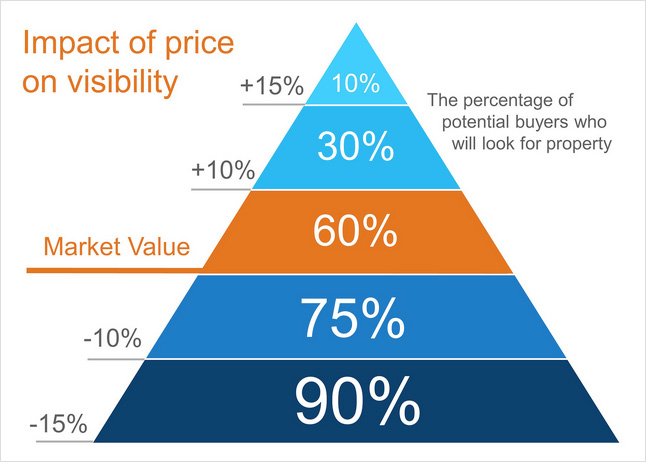Guide to Selling Your Home
Working with an agent
Working with an agent means signing a contract that gives the agent exclusive representation of the property for an agreed upon time period which is typically six months to one year. During that period the agent is responsible for researching the markets related to the property as a way to determine its value and then, based on this information, working with you to arrive at a suitable price for the home. Once an offer is accepted the Agent will manage the paperwork involved throughout the transaction process.
Preparing your home for sale
Your home is a place where memories become as much a part of the property as the colors, the furnishings, and the views outside the window. These memories however, can become your greatest challenge when it comes time to sell. You’ll need to think differently and look at your home through the eyes of a potential buyer, and be aware of the things that can be improved to ensure the highest price offered. To improve its attractiveness, your home might need repair work and a touch up of the exterior portions. The interior should be cleared away as much as possible. And it may be required to repaint and make repairs inside the house as well.
Evaluating the home
Establishing the right price for your home takes into account many factors, including your home’s unique features, investments in improvements that have been made that help increase the home’s value and the current state of the local real estate market. The right price can be achieved by taking into consideration all of these factors. Experience of the local market and what activity has been like historically can also help.
Hitting The Market At The Right Price
In today’s market, where demand is outpacing supply in many regions of the country, pricing a house is one of the biggest challenges real estate professionals face. Sellers often want to price their home higher than recommended, and many agents go along with the idea to keep their clients happy. However, the best agents realize that telling the homeowner the truth is more important than getting the seller to like them.
There is no “later.”
Sellers sometimes think, “If the home doesn’t sell for this price, I can always lower it later.” However, research proves that homes that experience a listing price reduction sit on the market longer, ultimately selling for less than similar homes. John Knight, recipient of the University Distinguished Faculty Award from the Eberhardt School of Business at the University of the Pacific, actually did research on the cost (in both time and money) to a seller who priced high at the beginning and then lowered their price. His article, Listing Price, Time on Market and Ultimate Selling Price, published in Real Estate Economics revealed:
“Homes that underwent a price revision sold for less, and the greater the revision, the lower the selling price. Also, the longer the home remains on the market, the lower its ultimate selling price.” Additionally, the “I’ll lower the price later” approach can paint a negative image in buyers’ minds. Each time a price reduction occurs, buyers can naturally think, “Something must be wrong with that house.” Then when a buyer does make an offer, they low-ball the price because they see the seller as “highly motivated.” Pricing it right from the start eliminates these challenges.
Don’t build “negotiation room” into the price.
Many sellers say that they want to price their home high in order to have “negotiation room.” But, what this actually does is lower the number of potential buyers that see the house. And we know that limiting demand like this will negatively impact the sales price of the house. Not sure about this? Think of it this way: when a buyer is looking for a home online (as they are doing more and more often), they put in their desired price range. If your seller is looking to sell their house for $400,000, but lists it at $425,000 to build in “negotiation room,” any potential buyers that search in the $350k-$400k range won’t even know your listing is available, let alone come see it! One great way to see this is with the chart below. The higher you price your home over its market value, the less potential buyers will actually see your home when searching.

A better strategy would be to price it properly from the beginning and bring in multiple offers. This forces these buyers to compete against each other for the “right” to purchase your house.
Look at it this way: if you only receive one offer, you are set up in an adversarial position against the prospective buyer. If, however, you have multiple offers, you have two or more buyers fighting to please you. Which will result in a better selling situation?
The Price is Right
Great pricing comes down to truly understanding the real estate dynamics in your neighborhood. Let’s get together to discuss what is happening in the housing market and how it applies to your home.
Marketing your home
The challenge is to ensure that your property receives maximum exposure to the right audience, and not just online, but off line as well including ads in magazines. Beyond having your home’s information listed on websites and advertised in publications, there are also open houses, direct mail campaigns and appearances in newsletters, handouts and flyers.
What a marketing strategy should include are:
- Online exposure through home search websites
- For Sale property signage
- Direct mail
- Advertisements in newspapers
Hosting an open house
Schedule your open house carefully. Pick a day where, in your community most of the open houses happen to become part of the day’s tour for potential homebuyers. Avoid holidays and community events. Consider the forecasted weather for the day.
And on the day of the open house, make sure to walk through each room for any last minute adjustments. Ventilate the house to remove any odors. Purchase and set fresh flowers. Prepare refreshments. Provide surveys to receive feedback from visitors. In the survey ask what they thought of the overall condition of the home, what the best features were, how the home compared to other properties they’ve visited, what they like best and least about the home, what they thought of the price. Whatever feedback you receive could help shape your marketing strategy for better results.
Receiving and reviewing the offer
When a buyer is interested in your property, an offer will be submitted, and sometimes more than one if you have several buyers who are interested. The offer will include the buyer’s price, which will be typically below your listed or asking price, and it will include terms, which will be conditions set forth by the buyer such as certain requested home repairs that you would be responsible to complete at your expense, or any furnishings or appliances the buyer would like to include as part of a successful transaction. An offer that comes in at the listed price should still be considered, based on the terms. The offer should also include a good faith deposit to show a commitment to the property as well as contingencies, which are events the buyer needs to rely on in order to purchase the home successfully.
In response to an offer you can choose to reject it, counter offer or accept it if it meets or exceeds your expectations.
Unless the offer is exactly what you want, it is the beginning of an exchange in which price, terms and contingencies are negotiable.
Making a Counter Offer
Counter offers may go back and forth between seller and buyer several times as part of the negotiation process. All terms of an offer are negotiable and when both parties approve an offer, a real estate attorney should review the contract before signing.
Final steps that should be taken at this time are:
- Agreement of closing date
- Agreement on date of loan approval
- Agreement on a date that the buyer could move in
- A receipt should be provided for the buyer’s good-faith deposit
- A decision on whether repairs are made before or after the closing
After the contract is signed
Steps are taken to meet the agreed upon terms of the final approved offer. When all the terms are met and prior to the closing, the buyer takes a final walk-through of the house to ensure that all the repairs and other items of the agreement have been fulfilled.
Before all three events, the appraisal, the inspection and the walk-through, the home should be cleaned and prepared or each occasion.
The closing
This is the process that takes place during a meeting of the parties involved in which the transaction is completed and the title of the property is passed from seller to new owner. Before the closing, the buyer conducts a final walk through of the home to make sure that the property is as it was when you viewed it and that all repairs that may have been stipulated in the offer have been completed to satisfaction.
During the closing, paperwork that has been prepared by all parties involved, including the agents, the bank providing the mortgage, lawyers and title companies, are signed.











